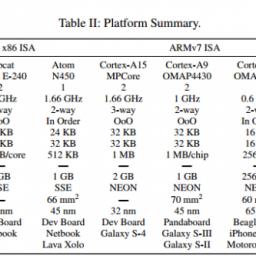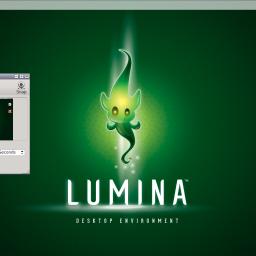Motorola used to be the powerhouse of mobile telephony. Now they're almost nobody. Their phones represent 2 percent of the global market for smartphones; Motorola Mobility lost $198 million in the first quarter of 2014, and its losses just since Google took over have totaled more than $1 billion, even as the company has cut some 17,000 workers.
ChicagoMag asks, "What the heck happened?" It's a hell of a story, and it's not over yet.
The history of many giant corporations (Lehman Brothers, General Motors) shows, great success can lead to great trouble. Interviews with key players in and around Motorola and its spinoffs indicate that the problems began when management jettisoned a powerful corporate culture that had been inculcated over decades. When healthy internal competition degenerated into damaging infighting. "I loved most of my time there," says Mike DiNanno, a former controller of several Motorola divisions, who worked at the company from 1984 to 2003. "But I hated the last few years."
Don't give up on Motorola yet! Their upcoming Moto 2 smartwatch looks phenomenal, and they've got new management and a couple of tricks up their sleeves. This article is a great chronicle of a company's demise, but skip down to the bottom for a glimpse of what's to come, too.

It's been a long-brewing argument, and for ages everyone has claimed that ARM chips are more power efficient due to fundamental differences in the architecture of its instruction set.
A new research paper examines these claims using a variety of ARM cores as well as a Loongson MIPS microprocessor, Intel's Atom and Sandy Bridge microarchitectures, and AMD's Bobcat.
This paper is an updated version of one I've referenced in previous stories, but its methods and claims are worth investigating in more detail. ISA investigations are intrinsically difficult given that it's effectively impossible to separate the theoretical efficiency of an architecture from the proficiency of its design team or the technical expertise of its manufacturer. Even products that seem identical can have important differences.
Extremetech looks into it via a series of benchmarks and concludes "
The RISC vs. CISC argument should've passed into history a long time ago. It may still have some relevance in the microcontroller realm, but has nothing useful to contribute to the modern era. An x86 chip can be more power efficient than an ARM processor, or vice versa, but it'll be the result of other factors - not whether it's x86 or ARM."

You'd think that Mozilla, whose Firefox browser is dropping in popularity alongside the now ubiquitous Google Chrome, would be desperate to incorporate new features that allow Firefox to regain its leadership marketshare. Unfortunately, that doesn't seem to be the approach they're taking.
Instead,
they've added a feature where new pages show sponsored advertisements. From TheNextWeb:
Mozilla has rolled out directory tiles, the company's advertising experiment for its browser's new tab page, to the Firefox Nightly channel. ... News of the non-profit organization's plan to sell ads in Firefox first broke back in February 2014. The Directory Tiles program is designed to "improve the first-time-with-Firefox experience," the company says. Instead of seeing blank tiles when a new Firefox user opens a new tab, Mozilla thought it would be best that they see "content." ... As you use Firefox, the rectangle tiles on the new tab page are populated with the most frequent and recent websites you visit. Since they start as empty (because new users naturally have no browser history), however, Mozilla sees the new tab page as both an opportunity to provide "inherent value" to the user, as well as an opportunity to generate revenue.
[Ed. note: this article posted using Chrome.]

In a surprise move, RedHat has
announced the departure of their Chief Technical Officer, Brian Stevens. While no official reason was given (certainly, don't expect to find it in the
terse, canned statement offered by the corporation's HR department), many speculate it may have been due to executive friction and personal ambition.
Stevens, whose Red Hat page was taken down minutes after the news was released, had been with Red Hat since 2001. Before that he had been the CTO at Mission Critical Linux, and a senior architect at Digital Equipment Company (DEC), where he worked on Digital's Unix operating system, Digital Unix. Today it lives on as HP's Tru64. In technical circles, he's perhaps best known for his work on the X Window System, the foundation of Unix and Linux graphic systems.
While at Red Hat, Stevens often outlines the company's technical and business plans for the public. Most recently for example, he spoke at Gigaom Structure on Red Hat and OpenStack. Before that, he laid out Red Hat's future technology plans at Red Hat Summit in April.
Look for his LinkedIn requests in your mailbox sometime soon, I suppose?

Earlier this year the folks at PC-BSD announced they would be developing a new desktop environment by the name of Lumina. The official PC-BSD blog <
recently posted a progress update on the Lumina desktop that shows they are making huge progress. There are
screen shots and a list of updated features.
PC-BSD is a popular desktop-oriented BSD flavor that is really just FreeBSD with extras.
Lumina is a new light weight window manager built on Fluxbox using the Qt toolkit. The development is spearheaded by Ken Moore of the PC-BSD project.
There's lots more about Lumina
at their Lumina FAQ. Most important of all is the question "Why a new desktop environment?" Their answer is related to the fact that because the other desktops are built first on Linux they must be ported, which is taking more and more time and energy; furthermore, many desktops now depend on Linux-specific functionality that makes the port almost impossible.
The Lumina desktop will also provide BSD-specific features through its file manager, like full ZFS snapshot restore capability.
[Ed. note: sneak preview, but I was planning on doing this one for Distro Friday tomorrow. Stay tuned.]



